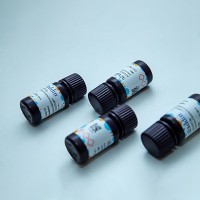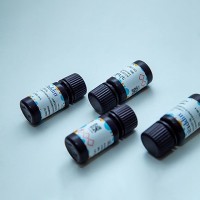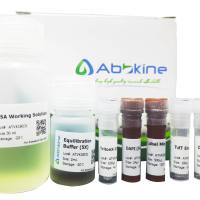Simultaneous In Situ Detection of DNA Fragmentation and RNA/DNA Oxidative Damage Using TUNEL Assay and Immunohistochemical Labeling for 8-Hydroxy-2-De
互联网
608
Analysis of DNA fragmentation using Terminal deoxynucleotidyl Transferase (TdT)-mediated nick end-labeling (TUNEL) is a very sensitive technique for in situ detection of various types of DNA breaks in cells undergoing apoptosis and/ or necrosis (1 –6 ). TUNEL technique is widely used, for instance, to study mechanisms underlying early development and morphogenesis (7 –14 ), aging (15 –24 ), cancer (25 ,5 ,25 –35 ) and neurodegenerative diseases (36 ,20 ,21 ,36 –44 ). TUNEL detects the DNA fragmentation, which represents the end point of DNA degradation in apoptosis but does not depict primary stimuli that caused irreversible disruption to the integrity of DNA. Oxidative stress is one of such primary stimuli and there is a great deal of research aimed at unraveling the molecular mechanisms underlying oxidative damage to DNA by so-called reactive oxygen species (ROS) and oxygen radicals. Oxidative damage has been implicated in a wide variety of neurodegenerative disorders including Alzheimer’s dementia, amyotrophic lateral sclerosis, Huntington’s disease and Parkinson’s disease (45 –55 ). Formation of 8-hydroxy-2′-deoxyguanosine (8-OHdG) is the most common modification of DNA caused by oxidative stress. Therefore, immunohistochemical quantification of 8-OHdG would be a valuable tool in determining the extent of oxidative DNA damage caused by ROS. On the other hand, methods analyzing the oxidative damage to the DNA, are not sufficient alone either, since they do not reveal whether oxidative stress will result in apoptosis and cell death or not. Thus, it appears that limitations of each individual assay may be overcome if both techniques are combined in a single assay that is applied to the same cytological of histological specimen.









